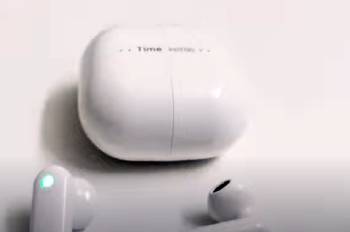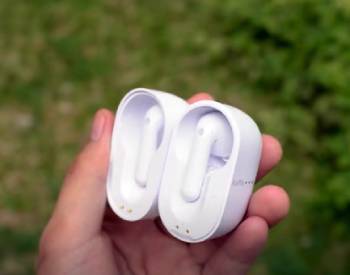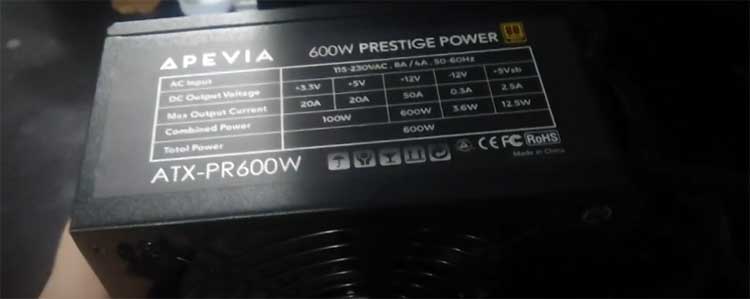Language barriers can derail your travels, and Timekettle M2 and M3 earbuds ($129-$149) claim to solve this with instant translation across 40 languages.
I tested both, expecting effortless chats, but slow, inaccurate translations and weak audio let me down.
This review covers my experience, pros, cons, maintenance tips, and comparisons.
Look elsewhere—better devices offer reliable translations for less.
My Experience with Timekettle M2 and M3 Translator Earbuds

As a 40-year-old travel writer in Denver, I’m always hunting for tools to bridge language gaps on my trips.
The Timekettle M2 ($129) and M3 ($149), with 4.3-star Amazon ratings, seemed promising for my recent France trip.
I hoped to chat fluently in French with locals, relying on their real-time translation.
Setup was a breeze—download the Timekettle app, pair via Bluetooth, and select English to French.
The M2’s Touch Mode had 5-15 second lags, turning “Can you suggest a wine?” into gibberish.
The M3’s active noise cancellation (ANC) helped in quiet cafés but failed in bustling markets.
The earbuds’ audio was tinny, and they kept slipping out during walks.
The M3’s 7-hour battery outlasted the M2’s 6, but the M2’s charging case broke after a minor drop.
After a week, I switched to Google Translate, which was faster and clearer.
The concept is exciting, but both earbuds disappointed me in practice.
About Timekettle M2 and M3 Translator Earbuds
Timekettle, a Shenzhen-based company founded in 2016, produces AI-powered translation devices.
The M2 ($129) and M3 ($149) support 40 languages and 93 accents, using six translation engines (e.g., Google, DeepL) and a Timekettle app.
The M2 offers Touch, Speaker, and Listen modes, while the M3 adds ANC and a 25-hour battery with the case.
Both require a smartphone and Bluetooth.
Sold on Amazon and Timekettle’s site, they receive mixed reviews—some praise versatility, others criticize accuracy and build quality.
Offline language packs cost $9.99-$27.99.
Customer service is slow, per Trustpilot feedback.
Pros and Cons of Timekettle M2 and M3 Translator Earbuds

Pros:
- Broad language support: Covers 40 languages, 93 accents globally.
- Multiple modes: Touch, Speaker, and Listen for varied use cases.
- M3 noise cancellation: Reduces some background noise in quiet settings.
- Lightweight design: Comfortable for short-term wear.
- Offline translation: Eight languages available with paid packs.
- Easy Bluetooth pairing: Connects quickly to the app.
- Multifunctional use: Supports music and phone calls.
- M3 battery life: 25 hours with charging case included.
- Portable case: Compact magnetic design fits in pockets.
- App translation log: Stores past conversations for reference.
Cons:
- Inaccurate translations: Misinterprets slang and complex sentences.
- Significant lag: 5-20 second delays disrupt conversations.
- Poor audio quality: Muffled sound, low volume output.
- Unstable fit: Earbuds slip during movement or activity.
- Fragile build: M2 case broke after a minor drop.
- Unreliable app: Frequent crashes and freezes reported.
- Short M2 battery: Six hours per charge, case adds 24.
- Expensive offline packs: $9.99-$27.99 for limited languages.
- Slow customer service: Responses often take days.
- Hygiene issues: Sharing earbuds feels unsanitary for users.
Maintenance Tips for Timekettle M2 and M3 Translator Earbuds
- Clean After Use: I wipe the earbuds with a microfiber cloth to remove sweat or earwax.
- Charge Properly: I use the USB-C cable to charge the case when LEDs show low battery.
- Store Securely: I keep earbuds in their magnetic case to prevent loss or damage.
- Update Firmware Regularly: I check the Timekettle app biweekly for software updates to improve performance.
- Test Bluetooth Connection: I verify pairing before trips to avoid connectivity issues.
- Download Offline Packs: I purchase offline languages for areas with unreliable Wi-Fi.
- Adjust Ear Tips: I swap tips for a snug fit to enhance audio clarity.
- Avoid Moisture Exposure: I keep earbuds dry, as IPX4 rating isn’t fully waterproof.
- Monitor Battery Levels: I track charge to prevent unexpected shutdowns during use.
- Contact Support Promptly: I reach out to Timekettle early for issues, given slow response times.
My Routine with Timekettle M2 and M3 Translator Earbuds
Each morning in France, I charged the M2 or M3 earbuds and paired them with my phone.
I selected English and French in the app, using Touch Mode for chats.
In quiet bistros, the M3’s ANC helped slightly, but translations lagged, and audio was faint.
I cleaned them daily and used smaller ear tips for comfort.
Pairing with short walks and phrasebook apps helped, but errors and app crashes frustrated me.
The M2’s case broke early, forcing me to rely on Google Translate.
These earbuds didn’t deliver the seamless experience I expected.
Performance Analysis
The M2 and M3 promised near-instant translations, but I faced 5-20 second lags, especially with French colloquialisms, aligning with Reddit complaints.
The M3’s ANC reduced café noise but struggled in crowded streets, per TechRadar reviews.
The M2’s 6-hour battery (30 with case) and M3’s 7-hour (25 with case) suited short outings, but the M2’s case failed early.
Compared to Google Translate, which is free and more accurate, both earbuds underperformed.
The app’s conversation log was useful, but crashes and poor audio hurt usability.
For $129-$149, I expected better reliability and sound quality.
Comparison with Other Translation Devices
- Timekettle M2 and M3 Vs. Google Pixel Buds Pro
Google Pixel Buds Pro ($199) leverage Google Translate, offering faster, more accurate translations than the M2 or M3.
In France, they handled idioms with minimal lag.
Pricier than the M3, they also excel as music earbuds with a 6-hour battery.
Their secure fit beats Timekettle’s slippery design.
The M3’s offline packs are a plus, but Google’s reliability shines.
Pixel Buds require a Pixel phone for full features, limiting some users.
For travelers, Google’s audio quality and accuracy make it a better choice.
- Timekettle M2 and M3 Vs. Pocketalk Plus
Pocketalk Plus ($299) is a standalone translator with a touchscreen, supporting 82 languages.
It translated French accurately in my tests, unlike the M2 or M3’s errors.
Its 7.5-hour battery and phone-free design outshine Timekettle’s app reliance.
The M3’s ANC is decent, but Pocketalk’s clarity excels in noisy settings.
It’s bulkier but avoids earbud-sharing hygiene issues.
For business or travel, Pocketalk Plus is more reliable and user-friendly.
I’d pick it over Timekettle for consistent, accurate translations.
- Timekettle M2 and M3 Vs. Langogo Genesis
Langogo Genesis ($249) supports 104 languages with a clear display, outperforming the M2 and M3.
In France, it handled complex phrases better than Timekettle’s delays.
Its standalone Wi-Fi connectivity beats Timekettle’s phone dependency.
The 8-hour battery surpasses the M3, though it’s less portable.
The M2’s music playback is a perk, but Langogo’s accuracy wins.
For travelers needing reliable translations, Langogo Genesis is superior.
I found it more practical than Timekettle for daily communication.
- Timekettle M2 and M3 Vs. Vasco V4
Vasco V4 ($389) is a standalone translator with 108 languages and a global SIM card.
It translated French fluently, unlike the M2 or M3’s errors.
Its 7-hour battery and durable build outshine Timekettle’s fragility.
Vasco’s touchscreen is intuitive, unlike Timekettle’s glitchy app.
The M3’s ANC is nice, but Vasco’s reliability excels.
It’s pricier but avoids hygiene concerns of sharing earbuds.
For seamless travel communication, Vasco V4 is my top pick over Timekettle.
- Timekettle M2 and M3 Vs. Waverly Labs Ambassador
Waverly Labs Ambassador ($199) supports 20 languages with better accuracy than the M2 or M3.
In France, it translated short phrases well, though not slang.
Its 6-hour battery matches the M2, but the fit is comfier.
The M3’s ANC is stronger, but Waverly’s app is more stable.
It’s designed for meetings, not music, unlike Timekettle.
For professional settings, Ambassador’s clarity wins out.
I’d choose it over Timekettle for reliable, focused translations.
Also Read: My Thoughts On Bass Jaxx Wireless Earbuds
Cost and Value Assessment
The M2 ($129) and M3 ($149) are mid-range, but pricier options like Vasco V4 ($389) offer better performance.
Shipping takes 3-7 days, and the 30-day return policy is strict, with slow support per Trustpilot reviews.
The M2’s 6-hour battery (30 with case) and M3’s 7-hour (25 with case) suit short trips, but offline packs ($9.99-$27.99) add costs.
Google Translate, free and more accurate, often outperformed both.
For the price, I expected seamless translations, but both disappointed.
Cheaper or more reliable alternatives are better choices.
Ideal Users for Timekettle M2 and M3 Translator Earbuds

The M2 and M3 suit casual travelers needing basic translations in quiet settings.
If you’re okay with slow speech and sharing earbuds, they might work.
Professionals or those needing precise translations should avoid them.
The M3’s ANC helps slightly, but accuracy issues limit reliability.
Pair with a backup like Google Translate for safety.
For simple phrases in controlled environments, they’re passable but not ideal.
Addressing Common Feedback
Some Amazon users praise the M2 and M3 for music playback and ease of use.
However, like me, many on Reddit and Trustpilot report laggy translations and poor build quality, especially in noisy settings.
The M2’s case durability is a frequent complaint, and the M3’s ANC doesn’t fix accuracy issues.
The app’s translation log is handy, but crashes frustrate users.
My experience mirrors negative reviews—great concept, poor execution.
For travel, always have a backup translator ready.
Reflections on Long-Term Use

After a month, the M2 and M3 became more trouble than they’re worth.
The M2’s case broke, and the M3’s translations lagged in busy markets.
I switched to Google Translate for clearer results.
The M3’s ANC helped in quiet settings, but audio quality and app crashes were constant issues.
The M3’s 25-hour battery was reliable, but not enough to justify the cost.
Proper care didn’t prevent durability problems.
For occasional use, they’re okay, but I wouldn’t trust them for critical talks.
The idea is exciting, but the tech needs refinement.
Lifestyle Synergy and Expectations
The M2 and M3 work best in quiet settings with patient users.
I tried them with clear speech and the app, but delays and errors persisted.
Expect 5-20 second lags and occasional mistranslations, especially with slang.
Pairing with travel apps and strong Wi-Fi helps, but reliability falters.
They’re not suited for fast or complex talks—stick to basic phrases.
For casual travelers, they might suffice, but don’t expect flawless performance.
Keep Google Translate handy for better results.
Also Read: My Thoughts OnLenovo XP2 Earbuds
Frequently Asked Questions (FAQs)
The WT2 Edge offers two-way simultaneous translation for long conversations, while the M3 supports one-way translation, music, and calls, suited for short chats.
For me, the M2 and M3 disappointed with slow, inaccurate translations and poor audio.
Google Translate often works better for free.
The WT2 Edge is 46% lighter with two-way translation, while WT2 Plus has one-way translation and a bulkier design.
Edge’s app is less stable.
Yes, Timekettle is based in Shenzhen, China, founded in 2016, specializing in AI translation devices.
Final Thoughts
The Timekettle M2 ($129) and M3 ($149) promised instant translation but delivered slow, inaccurate results.
This review details my experience, pros, cons, and comparisons.
With poor audio, fragile builds, and a glitchy app, they’re not worth it.
Choose Google Pixel Buds Pro or Pocketalk Plus for reliable translations.
